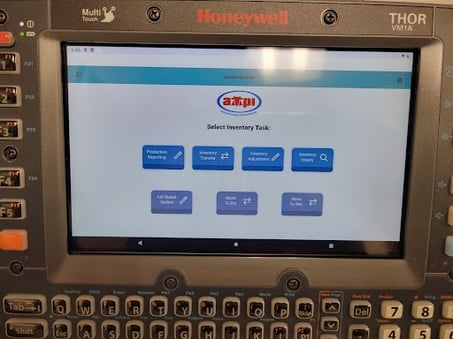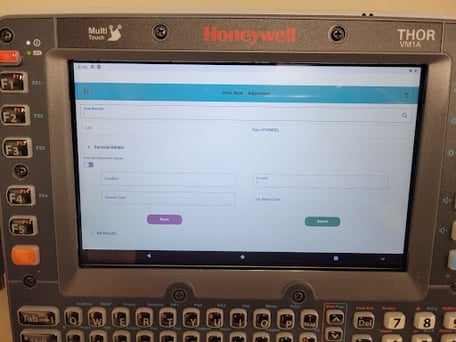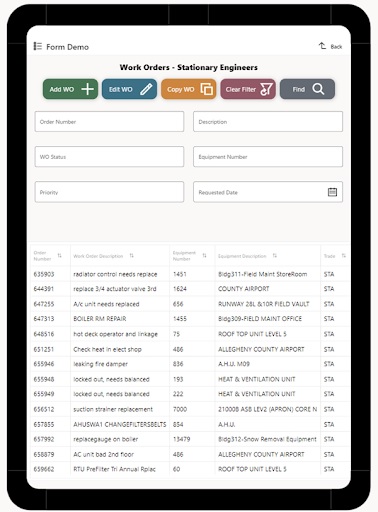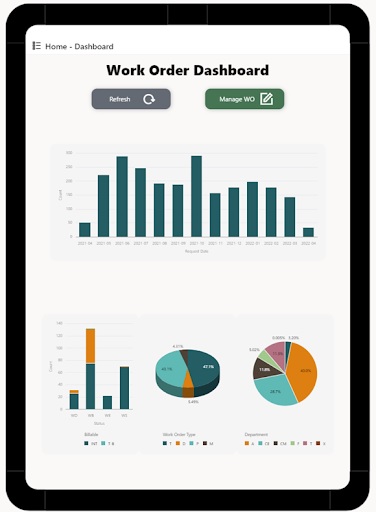Advice and Ideas for Custom Mobile Application Design
Custom mobile application design is important, but it doesn’t have to be overly complicated. With today’s tools, customization and user-friendly design have never been easier to accomplish. Here’s a look at some of the best practices for custom mobile applications. Our focus is on JDE mobile apps, but you’ll find these helpful across a range of apps.
What Type of Custom Mobile Application Solution Should You Design?
The first choice in designing a custom mobile application solution is deciding whether to go with native, old-school web, hybrid, or progressive web apps. This will impact how easy it is to design the app AND how easy it is to maintain and update the design over time. Native web apps pose challenges with creating and maintaining multiple code bases. Hybrid apps help a little, but there is still a lot of duplicated work. Old-style web apps have a well-earned reputation for poor user experience on handheld devices.
This leaves PWAs as the clear winner since it is a design and development style that is web-based in principle but decidedly mobile-first in practice. This type of app is completely focused on delivering an optimal experience for mobile users, which means the UI tools tend to be top notch. With progressive web apps, a new version can be mass updated where it lives on the web and all changes are instantly available to all mobile users regardless of device or platform. This allows the design to be iteratively and continuously improved with a very low lift for updating and maintaining the apps.
What Tools Make Custom Mobile Application Design Simpler?
At ACBM we design low-code, no-code apps with tools like Oracle Visual Builder (VBCS) and Orchestrator. On the UI side, simple drag and drop tools make it easy to create the desired user experience. Visual Builder users JET components that make it easy to create mockups for feedback. VBCS has a massive library of pre-built and robust enterprise tools. It also has themes already designed (like the popular Redwood theme) that make the UI look and feel like a professional native app.
Because the logic is stored in Orchestrator, it is decoupled from the user interface. The full power of JDE is available through Orchestrator Studio to build out business logic, and back-end functionality that precisely matches an organization’s desired workflows. Again, this is a low code, no code system. Other than the occasional Groovy script, it requires a good understanding of what you want to accomplish but little knowledge of how to write code.
Examples of Design Ideas Custom Web and Mobile Applications Using VBCS
Idea #1: Custom UI Design Updates for Rugged Environments
Designing mobile apps for use on a tablet or other handheld device in a rugged and fast-paced environment such as a warehouse is different from designing an app for leisure use. Here’s an example of an app built so that warehouse workers can operate the app and select from drop down menus with one thumb.


In the previous initial version of this custom mobile app, the icons were too small for the forklift drivers to use effectively. We rearranged the icons and dynamically updated the UI to have bigger buttons and a more intuitive layout. Unlike some other platforms, with VBCS, it’s possible to drag, drop, and resize elements however you want them.
Idea #2: Create Mobile-Friendly Tables and Grids
Another nice feature of Visual Builder is that you can create tables and grids. Most platforms make it possible to create a mobile app with many fields that you can search or browse, but grids are trickier. With a grid, you can dynamically sort, filter, or update data, which makes it more useful in some business applications.

Idea #3: Add Functionality with BI Dashboards
Business Intelligence and operational dashboards can be powerful decision making tools. Using orchestrations, it’s possible to feed in data that sits over many sources, visualizing it in an appealing and informative way using charts and graphs. This kind of dashboard is dynamically updated in real time since it connects directly to JDE on the back end. Here’s an example of a dashboard for field maintenance and parts request management.

Is It Worthwhile To Invest in Custom Mobile App Design?
The truth is that generic apps simply don’t meet the needs of most business users. When JDE was building mobile apps for users to download, adoption was very low. One factor that likely played a role is that the apps were built to serve everyone. In theory, this would have led to widespread adoption. In practice, it meant that almost no one used these off-the-shelf solutions.
Why? Because generic apps didn’t really fit specific requirements for each user. Even though the general idea of entering sales orders or purchase orders is similar from one organization to the next, the details are nuanced. Because the original JDE mobile apps couldn’t be easily customized out of the box, they just didn’t fit what users were really trying to do (or HOW they wanted to do it). In the end, changing a well-oiled business process to fit a generic app just doesn’t make sense for most companies.
Today, JDE doesn’t build or support its own library of mobile apps. Instead, custom mobile application design is left up to firms that specialize in custom mobile application development services. As pioneers in building Orchestrations and PWAs for JDE users, ACBM is here to help you design the ideal user experience for your team. Click here to learn more about ACBM's approach to custom mobile application development.

